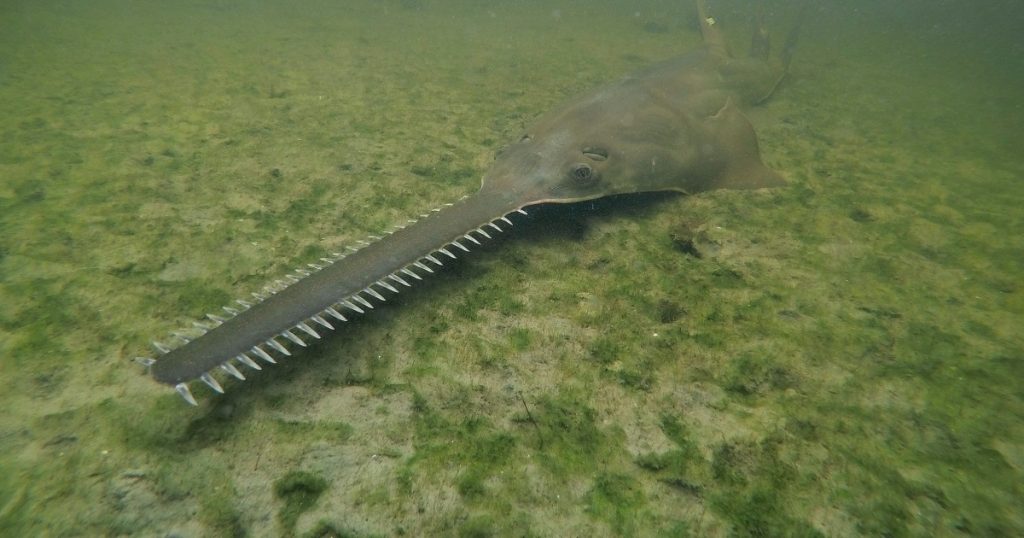Ripley’s Aquariums plan to take up to six smalltooth sawfish into their facilities in an effort to rescue and rehabilitate the endangered marine creatures that are exhibiting erractic behavior in Florida waters. A majority of Ripley’s animal care team will be involved in caring for the sawfish, along with support from other organizations such as the Mote Marine Laboratory and Aquarium. The initiative is led by Kathryn Flowers, a Mote postdoctoral research fellow, who emphasizes the importance of collaboration in solving the mystery surrounding the sawfish deaths.
Dean Grubbs, the associate director of research at Florida State University’s coastal and marine laboratory, notes that various fish species off Florida’s coast are being affected by the unusual behavior, ranging from bait fish to groupers and stingrays. The cause of this phenomenon remains unclear, with multiple theories being considered. The Florida Fish and Wildlife Conservation Commission has ruled out some potential causes such as communicable diseases or environmental factors, leading to a heightened focus on finding the true underlying reasons behind the sawfish deaths.
Sea Mckeon, director of marine programs at the American Bird Conservancy, highlights the importance of public involvement in monitoring and reporting strange fish behavior in order to assist scientists in their research efforts. Members of the public are encouraged to upload videos or photos to community science sites like iNaturalist.org to provide valuable data for analysis. The situation surrounding the sawfish deaths has become increasingly concerning since February, with experts like Dean Grubbs expressing distress over the impact on their research efforts and the urgency to address the issue and prevent further losses.
The collaborative effort to rescue and rehabilitate smalltooth sawfish involves multiple organizations, including Ripley’s Aquariums and the Mote Marine Laboratory and Aquarium, to provide the necessary care and support for the affected marine creatures. The initiative is driven by a need to understand the underlying causes of the erratic spinning behavior and increased mortality among the sawfish population in Florida waters. While the exact reasons behind this phenomenon remain unclear, researchers and wildlife agencies are working together to investigate and address the situation to prevent further harm to the endangered species.
The Florida Fish and Wildlife Conservation Commission has ruled out some potential causes of the sawfish deaths, including communicable diseases and environmental factors like oxygen, salinity, and temperature. This ruling has prompted a more focused effort to identify the root causes of the problem and develop strategies to mitigate the impacts on the sawfish population. Public participation in reporting unusual fish behavior is seen as a valuable contribution to the research efforts aimed at finding solutions to the ongoing issue affecting marine life off the coast of Florida.
Marine experts like Dean Grubbs emphasize the urgency of addressing the sawfish deaths and finding a way to reverse the distressing trend that has been observed since February. The involvement of organizations and individuals in monitoring, reporting, and supporting research initiatives is crucial to understanding and addressing the factors contributing to the increased mortality among smalltooth sawfish in Florida waters. The collaborative efforts of various stakeholders reflect a shared commitment to preserving and protecting endangered marine species and their habitats in order to ensure their long-term survival and well-being.


